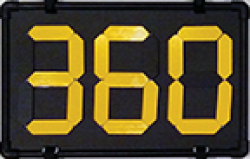 BLYC
BLYC
US Sailing Releases 2022 Safety Equipment Requirements
Each year the US Sailing Safety Equipment Requirements committee, comprising sailors from across the US, considers possible changes to the Requirements and proposes appropriate changes for final approval by the Safety at Sea Committee, the Offshore Committee, and the US Sailing Board of Directors. The 2022 changes are now available to the US Sailing community.
The latest changes include additions to the monohull and multihull categories. The monohull addition includes the requirement to stow a fire blanket adjacent to each stove (in the Ocean category), while the multihull category was updated to include several minor changes to make it consistent with the Monohulls.
For the full updates, click here.
The US Sailing Safety Equipment Requirements (SER) are a set of equipment requirements for larger boats taking part in nearshore, costal and ocean racing compiled to provide race organizing authorities with clear safety equipment requirements guidelines and supply the ability to modify those requirements for their event and venue.
Also new in 2022, US Sailing has uploaded the SER’s in two formats for ease of use: Individual PDF files of the requirements for each category (nearshore, coastal and ocean) so that owners and boat captains can more easily see which requirements apply to them and a comprehensive excel spreadsheet of the requirements for each category, the instructions, appendix and history of revisions for Organizing Authorities who may want to modify the requirements for their event.
The SER committee has the objective of meeting the needs of the US Offshore Community and maintaining compatibility with the World Sailing OSRs as far as possible. It is a goal that US offshore race boats can compete internationally without modification, and that international boats can compete in US events without modification.
US Sailing would like to recognize the contributions of volunteers on numerous committees that make it possible to approve and release new guidelines. This would not be possible without their time and effort.
Source: US Sailing via sailingscuttlebutt.com
Mini Safety at Sea Seminar
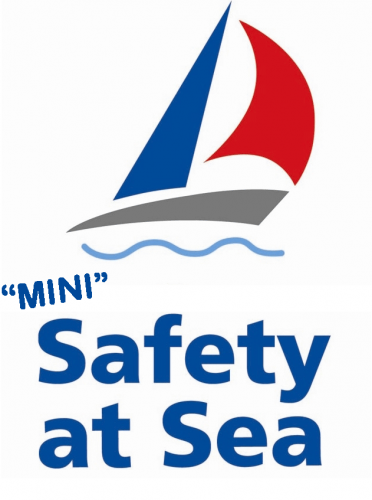
Safe Boating is NO Accident!
Join us on Sunday, March 13 for our “Mini” Safety at Sea Seminar
US Sailing National Race Officer Steve Harris and BLYC Fleet Captain David Paligo have developed an abbreviated Safety at Sea Seminar based on the full US Sailing seminar, but geared more specifically to safety on an inland lake. In this aproximately 2 hour seminar, we will cover…
SAFETY EQUIPMENT
PLANNING & PREPARATION
BLYC SAFETY PLAN
ON-WATER RESCUES
MUCH, MUCH, MORE
Although geared specifically towards sailing, the information in the seminar will apply to all boating disciplines and we encourage all BLYC members to attend this FREE seminar.
Questions?
Contact Fleet Captain David Paligo
Iceboating
It’s that time of year…. WINTER!
Yea, yea, most of the time boaters don’t really find winter appealing. But sailors…. that’s a different story. Not only do many sailors also ski, but sometimes winter also affords one of the most exciting disciplines in the sport – ICEBOATING!
Typically, its hit or miss at Buckeye Lake whether or not we’ll get the right conditions for iceboating. Not only do you need good, thick ice (safety first!), but in order to go well, you also need smooth ice. However, for our friends up north at the Toledo Ice Yacht Club and the intrepid year-round residents at Put-in-Bay, iceboating is a regular activity in the winter. both Maumee Bay and the inner harbor on South Bass Island currently have good, smooth ice and they’re taking advantage of the opportunity. Here are a couple of videos of Tom Thanasiu – a year-round PIB resident familiar to many of us at BLYC – sailing his DN iceboat at Put-in-Bay…
Will We Get Good Ice at Buckeye Lake?
It remains to be seen, but the latest ice reports from Doug Stewart suggest that we just might get good, solid ice this year. Whether or not it’ll have a smooth surface to sail, however, remains to be seen. But we can be ready!. Chuck Bendig has an Arrow iceboat, both Don & Steve Harris each have DN iceboats, and there are a few more scattered around the lake.
Time to get the boats out, sharpen the blades and be prepared to get out on the ice?
Why We Have Safety Regulations in Sailing…
– Steve Harris, NRO

The Rolex Sydney Hobart Yacht Race is an annual event hosted by the Cruising Yacht Club of Australia, starting in Sydney, New South Wales, on Boxing Day and finishing in Hobart, Tasmania. The race distance is approximately 630 nautical miles (1,170 km). The race is run in conjunction with the Royal Yacht Club of Tasmania, and is widely considered to be one of the most difficult yacht races in the world. (from Wikipedia)
As usual, the sailing world was following the progress of the annual event online as Ichi Ban, Celestial, and Quest were in a neck and neck race for line honors in the final hours. Quest eventually dropped back, leaving a neck-and-next race to the finish between the remaining two – after 4+ days of racing. This year’s race was particularly difficult. The sea conditions were very rough and over 1/3 of the fleet had dropped by the end of the first 24 hours.
Ever since the disaster in the 1979 Fastnet Race, in which 75 boats capsized, 5 sunk, and 15 sailors lost their lives, there has been an ever increasing focus on safety in sailing – especially for offshore racing. The Sydney-Hobart is no exception.
Locally, most of us are familiar with the safety equipment that ODNR requires us to have on board. However, for “big water” races, most often the US Safety Equipment Requirements are also invoked, requiring further specialized equipment and training. At the level of the Sydney-Hobart, there are similar requirements, and these are rather extensive.
One such requirement that is actually also common at all levels, including inland racing, is the requirement to carry and monitor a VHF radio for emergencies. While not too long ago considered by many to be “unfair” communications, now it is common for Notices of Race and Sailing Instructions to include an instruction requiring boats to both carry and monitor radio communications at all times. Often, these instructions also include a requirement for checking in with the race committee and notifying them of a boat retiring. This very type of instruction has made for an interesting, although somewhat controversial end to this year’s Sydney-Hobart…
From Sailing Scuttlebutt (12/29)…
At the top of the standings today as of 4:30am AET is the TP52 Celestial owned by Sam Haynes, with Matt Allen’s Botin 52 corrected next by three minutes. But a protest by Allen against Haynes, along with a Race Committee protest against Haynes, may trump what occurred on the course…
Both protests refer to Rolex Sydney Hobart Yacht Race Sailing Instructions 31.4 which states: ‘All boats shall maintain a continuous listening watch on VHF Channel 16 for the duration of their race.
The protests were heard together by an International Jury on December 30 and the committee found against Celestial, penalizing her 40 minutes on elapsed time and, thus, giving the win to Ichi Ban. The facts found by the Jury were as follows:
- The wind was at 7-15 knots.
- At 23.53 on 27 December 2021, the Race Committee received a telephone call from Australian Maritime Safety Authority (AMSA) Search and Rescue notifying the Race Committee that a Personal Locator Beacon (PLB) assigned to Wulf Wilkens, a crew member on Celestial, was activated.
- At 23.56, the Race Committee commenced attempting to contact Celestial on the satellite phone listed in their Sat Phone Declaration and received a “call could not be connected” error. The Race Committee continued to attempt to contact Celestial by Satellite Phone during the incident.
- At approximately 23.58 the Race Committee contacted Ichi Ban by satellite phone because they were the nearest boat and within 7 to 10 nm from Celestial. The Race Committee requested Ichi Ban contact Celestial on VHF 16 to clarify whether all were safe on board.
- Ichi Ban commenced calling Celestial on VHF 16 at 23.58 and received no response, approximately every 2 minutes for 7 minutes.
- From 0007, Ichi Ban continued to attempt to contact Celestial at least every 5 minutes on VHF 16 as requested by the Race Committee.
- The Race Committee was in frequent contact with AMSA throughout the incident in relation to the decision whether to deploy search and rescue aircraft from Essendon Airport, Victoria.
- Quest, who heard Ichi Ban’s VHF radio call to Celestial, also attempted to contact Celestial on VHF 16 but no response was received.
- At 0057, following the Race Committee advising AMSA and in agreement with the Race Committee, Ichi Ban released a handheld white flare to attract Celestial’s attention, but did not receive a response.
- At approximately 0120, following permission from AMSA and approval by the Race Committee, Ichi Ban released a red parachute flare in an attempt to attract Celestial’s attention.
- At approximately 0130 Celestial contacted Ichi Ban on VHF 16 using the navigator’s handheld VHF radio on deck. Ichi Ban informed Celestial that the reason for the red flare was to attract Celestial’s attention at the request of the Race Committee due to the activated PLB.
- Celestial confirmed the PLB activation was accidental, and all crew were safe.
- Celestial deactivated the PLB.
- At 0139 Celestial sent a text message to the Race Committee through their satellite phone to confirm the PLB activation was accidental, and all crew were safe. An attempted satellite call failed.
- The Race Committee informed AMSA, enabling the search and rescue aircraft on standby to be stood down.
- Celestial’s installed VHF radio was located on the port bulkhead near the mast, with a repeated to the navigation station. The radio was new in 2021.
- On the morning of the race start, the navigator tested the installed VHF radio and found it to be working satisfactorily.
- At all times during the incident, the VHF radio was turned on as indicated by power light and backlight illuminating channel 16 with volume turned up at the navigation station.
- Two additional handheld VHF radios were on board Celestial but not turned on during the incident until Celestial sighted the red flare. The navigator’s handheld radio was then turned on and used to contact Ichi Ban.
- During the incident, Celestial’s crew were fatigued.
- The Celestial navigator was seated at the navigation station for approximately 97% of the race time.
- During the incident, Celestial’s engine and water maker were both turned on, which created significant noise below deck.
- Celestial did not hear any attempts to contact her on VHF during the incident.
- At other times in the race, Celestial heard Ichi Ban and other marine traffic using her installed VHF radio.
- The distance between Ichi Ban and Celestial did not significantly change throughout the incident duration.
- Twelve other PLBs were accidentally activated during the race, and in each case the boat responded to the Race Committee within 25 minutes (average response time is 15 minutes).
- At all times Ichi Ban continued to race the boat and did not alter course as a result of the incident, however Ichi Ban did prepare and deploy two flares which temporarily affected her performance.
So, what does all this mean?
Essentially, Celestial, while likely not purposely, violated the sailing instruction requiring them to “maintain a continuous listening watch” on the radio. While the penalty they received cost them the win, it could have been worse. Some commenting online think that the penalty they received, however, was still too harsh. Was it? In all reality, they could have been disqualified…
- What if the PLB wasn’t accidentally activated? What if someone was truly in danger and the race committee failed to act on the alert?
- Even though it was an accidental activation, what if the RC marshalled all the rescue resources, putting the rescuers in potential danger for a “false alarm?”
While it may seem harsh to some, safety regulations such as this one exist for a reason. Safety cannot be secondary to winning. Sure, it would be a hard pill to swallow to lose a well fought race in the protest room for what is little more than an “accident.” That said, in my opinion, its better to have such regulations – and to have them strictly enforced – than to have someone lose their life on the water. (Read the full article about the protest from Sailing Scuttlebutt here)
As of today – December 31 – Celestial has filed a Request to Reopen the hearing. Perhaps they have new information and evidence available. Perhaps they’re just “grasping at straws” and holding out hope that another panel may see it differently. I personally doubt that will be the case.
Either way, the saga continues…
RRS – Part III; Post #9 – “Grab Bag” 1
Often, we focus our rules discussions only on Part 2 of the rules – “When Boats Meet.” This winter, I plan to explore the rules of Part 3 – “Conduct of a Race.” They may appear to only matter to the Race Committee, but they have significant importance to the racing sailor too.
– Steve Harris, US Sailing National Race Officer
Rules 27 & 31...
This is more of a “grab bag” of other rules in Part 3. Each of their own importance, but not necessarily long enough for their own post. They have consequences for racing sailors but, generally, don’t require a long discussion.
Rule 27 - Other Race Committee Actions Before the Starting Signal
27.1 – “No later than the warning signal, the race committee shall signal or otherwise designate the course to be sailed if the sailing instructions have not stated the course, and it may replace one course signal with another and signal that wearing personal flotation devices is required (display flag Y with one sound).”
27.2 – “No later than the preparatory signal, the race committee may move a starting mark.”
27.3 – “Before the starting signal, the race committee may for any reason postpone (display flag AP, AP over H, or AP over A, with two sounds) or abandon the race (display flag N over H, or N over A, with three sounds)”
What’s this rule saying?
Simply put, these are directives to the race committee. These are both things that they must do, and items that they can do.
27.1 – “No later than the warning signal, the race committee shall signal or otherwise designate the course to be sailed if the sailing instructions have not stated the course, and it may replace one course signal with another and signal that wearing personal flotation devices is required (display flag Y with one sound).”
This part of the rule contains a number of points…
- The first is proscriptive… “the race committee shall signal or otherwise designate the course…”
- This is probably common sense – different courses may require different strategies in how you would sail them. During the starting sequence, there’s too much going on to have to look for another signal.
- The second part, most sailors (and race officers, for that matter) find confusing. What is a “course signal?” Certainly, the race committee cannot change the descriptions of the marks or other items described in the sailing instructions on the water – there is a very specific protocol for doing that.
- a “course signal” (although not defined in the RRS) is a signal that says what course is to be sailed. In other words…
- In a multi-fleet regatta with multiple starts, the RC can start one fleet on one course and then “no later than the warning signal” designate a different course for the next fleet.
- It also allows the race committee to change their mind. Perhaps they initially decided on a particular course but, for a variety of possible reasons – several general recalls, a long postponement, a change in conditions, etc. – they decide instead to start the fleet on a different course. They have that flexibility so long as it is signaled “no later than the warning signal.“
- a “course signal” (although not defined in the RRS) is a signal that says what course is to be sailed. In other words…
- The final part is pretty straightforward. It simply provides a time by which Rule 40 can be invoked. Rule 40 is the rule requiring competitors to wear personal floatation devices. It makes sense that this signal needs to be given with ample time for the competitors to comply.
27.2 – “No later than the preparatory signal, the race committee may move a starting mark.”
This rule simply prescribes a time by which the starting marks must be in place. Obviously, boats cannot start, or set up their start, without knowing the location of the line. Why the Preparatory Signal (4 min. pre-start)? I’m not sure there’s a great answer other than perhaps this…. Especially in varying wind conditions, the RC needs the capability to quickly set the line and go immediately into sequence to get a fair start off. By making this time at the preparatory signal, they can do so and reliably know that the mark will have settled into place in its final location by the required time.
27.3 – “Before the starting signal, the race committee may for any reason postpone (display flag AP, AP over H, or AP over A, with two sounds) or abandon the race (display flag N over H, or N over A, with three sounds)”
This part of the rule is permissive. I’m sure that at some time in the past there were redress requests that led to this being put into the rulebook , but basically, it makes it clear that the RC has the ability to call off a race, for any reason, before the start. After the start, they can no longer postpone and they can only abandon for reasons allowed under rule 32.
Rule 31 - Touching a Mark
“While racing, a boat shall not touch a starting mark before starting, a mark that begins, bounds or ends the leg of the course on which she is sailing, or a finishing mark after finishing .”
This rule is, for the most part, pretty straightforward. IF the mark is part of the leg on which you are sailing, don’t touch it. This would also include start and finish marks. That’s where it gets kinda hairy…
Before we get into that, however, what does it mean to “touch” a “mark?”
Definition of "Mark"
“An object the sailing instructions require a boat to leave on a specified side, a race committee boat surrounded by navigable water from which the starting or finishing line extends, and an object intentionally attached to the object or vessel. However, an anchor line is not part of the mark.”
This definition may seem a bit lengthy for what we might typically think the definition should be. In particular, what does “an object intentionally attached to the object or vessel” refer to?
Often, race committees will stream a mark off the stern of the committee boat at one end of the start line. This is often called a “limit mark” or “keep away mark.” The intent is to keep boats starting from getting too close to the committee boat and potentially colliding with it. Since such marks are intentionally attached, to the vessel, they are, by rule, part of the mark and you cannot touch it.
But what constitutes “touching” the mark?
In several World Sailing cases, it has been established that “contact with a mark by a boat’s equipment constitutes touching it.” This would include contact by any part of the hull, crew, or equipment – essentially, any contact is contact. The one exception is that the anchor line is not part of the mark. So, for example, your rudder catches the anchor line as you round the windward mark. In reality, we all know that it is then likely that the mark would be pulled over and touch the hull, therefore being contact with the mark. However, if you were able to clear that line before the mark was pulled over and contacted the hull, you would not have violated the rule.
NOW… finishing creates a unique circumstance. Although the definition of mark is the same throughout the race, two more definitions come into play at the finish – finish and racing…
Definition of "Racing"
“A boat is racing from her preparatory signal until she finishes and clears the finishing line and marks…”
Definition of "Finish"
“A boat finishes when any part…crosses the finishing line from the course side. However, she has not finished if after crossing the finish line she… corrects an error in sailing the course…“
If you recall Post #5 in this series – Rule 28; Sailing the Course – I mentioned this situation and that it would require a longer discussion…
Hitting a finish mark presents a unique situation. If we look at the definition of finish, we see that a boat finishes when any part of her hull crosses the finish line from the course side. However, looking at the definition of racing, she has to “clear the finishing line and marks” before she can be considered as no longer racing. In other words, until she has cleared the finishing line and marks, she is still subject to the rules, including Rule 31.
Consider the following situation…

In the diagram above, Boat B has met the definition of finish in that her hull crossed the line from the course side of the line. However, after crossing, she made contact with the finish mark. Since she clearly has not “cleared the finishing line and marks,” she is still racing, is subject to, and has violated Rule 31.
What would the race committee do in this situation?
The proper action of the RC would be to score her finish position – at this point, she has met the definition of finish. However, they may strongly consider protesting her under Rule 31. The RC can’t simply “unfinish” her, a protest would be required.
What should the competitor do?
As she has broken Rule 31, she should do a one-turn penalty and cross the finishing line again from the course side. Under the definition of finish, she has “correct(ed) an error in sailing the course and no longer meets the definition of finish.
At this point, she has met her obligation of making a one-turn penalty and no longer subject to protest. By doing so, she also has met the definition of finish. The RC will record this finish as well. As common practice, when a boat crosses the finishing line multiple times from the course side, good race committees will assign the lower of the scores. If the reason for multiple “finishes” is as described above, they have done it correctly. If there is some other reason, the competitor is sure to submit a scoring inquiry after scores are posted and it can be sorted out then.
Next Week - Part 3 "Grab Bag" - 2
... Rules 34 & 35
RRS – Post #10 – “Grab Bag” 2
Often, we focus our rules discussions only on Part 2 of the rules – “When Boats Meet.” This winter, I plan to explore the rules of Part 3 – “Conduct of a Race.” They may appear to only matter to the Race Committee, but they have significant importance to the racing sailor too.
– Steve Harris, US Sailing National Race Officer
Rules 34 & 35 ...
This is another “grab bag” of other rules in Part 3. Each of their own importance, but not necessarily long enough for their own post. They have consequences for racing sailors but, generally, don’t require a long discussion.
Rule 34 - Mark Missing
- replace it in its correct position or substitute a new one of similar appearance, or
- substitute an object displaying flag M and make repetitive sound signals.
Placeholder
Rule 35 - Race Time Limit & Scores
If one boat starts, sails the course and finishes within the time limit for that race, if any, all boats that finish shall be scored according to their finishing places unless the race is abandoned. If no boat finishes within the race time limit, the race committee shall abandon the race.
RRS – Part III; Post #8 – Rule 33
Often, we focus our rules discussions only on Part 2 of the rules – “When Boats Meet.” This winter, I plan to explore the rules of Part 3 – “Conduct of a Race.” They may appear to only matter to the Race Committee, but they have significant importance to the racing sailor too.
– Steve Harris, US Sailing National Race Officer
Rule 33 - Changing the Next Leg of the Course
“While boats are racing, the race committee may change a leg of the course that begins at a rounding mark or at a gate by changing the position of the next mark (or the finishing line) and signalling all boats before they begin the leg. The next mark need not be in position at that time.
If the direction of the leg will be changed, the signal shall be the display of flag C with repetitive sounds and one or both of
the new compass bearing or
a green triangle for a change to starboard or a red rectangle for a change to port.
If the length of the leg will be changed, the signal shall be the display of flag C with repetitive sounds and a ‘–’ if the length will be decreased or a ‘+’ if it will be increased.
Subsequent legs may be changed without further signalling to maintain the course shape.”
Although a bit lengthy, this rule is actually pretty straightforward. To ensure that we’re all using the same language, recall the post on RRS 32 about Shortening the Course…
Shortening the course is the elimination of legs of the course. This is part of RRS 32.
What this rule (RRS 33) speaks to is Changing the course. This sometimes creates confusion, as we discussed in Post #7. But, if you remember “C is for Change,” you’ll be fine with this rule.

Keep in mind, the racing rules are written in such a way as to give the race committee tools that allow them to save a race. Lots of things happen on a race course that have the potential to make it less than ideal…
- Wind shifts make the course less than fair
- Changes in wind velocity make it desirable to change the length of the course.
- Changes in wind velocity make it unlikely that any boat will finish within the time limit.
- Impending safety concerns (foul weather, heavy seas, etc.) make it desirable to shorten the overall time the boats are going to be on the water
- etc.
Rule 33 makes it possible for the race committee to adjust to these changes and keep the racing fair, safe, and competitive.
Let’s look first at changing the direction to the next mark…
In the case of a wind shift, the course becomes less square and inherently less fair. Often, you’ll hear the argument “We’ve all got to sail in the same wind” as a reason not to move a mark and change it’s location. The problem is, not all boats in the fleet are truly in the same wind when the course isn’t square! Depending where you are on the course when the shift happens, some boats will be benefitted by a lift and others will be hampered by a header… and perhaps significantly so. Additionally, the tactically sailable area is also significantly reduced.
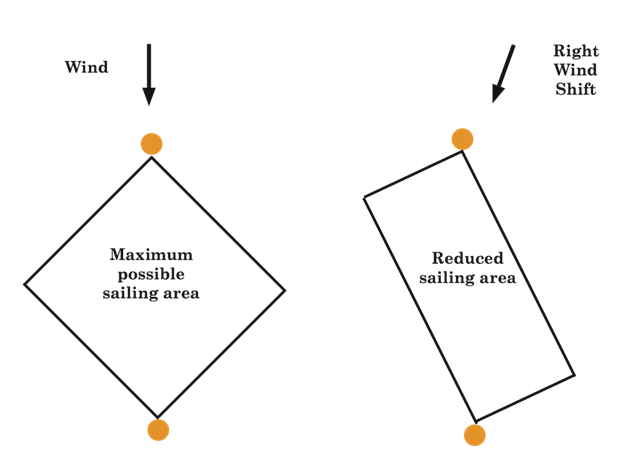
In order to maintain the best tacking angle upwind, the area in which boats can tactically sail in is significantly reduced.
Assuming an upwind tacking angle of 90°…
SHIFT
0°
5°
10°
20°
30°
45°
TIME ON
FAVORED TACK
50%
54%
59%
68%
79%
100%
EFFECTIVE
SAILING AREA
100%
98%
94%
77%
50%
0%
It gets even worse downwind…
Assuming a downwind gybing angle of 50°…
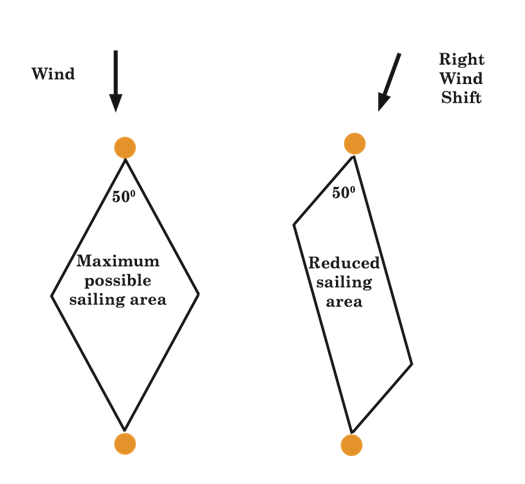
SHIFT
0°
5°
10°
15°
20°
25°
TIME ON
FAVORED TACK
50%
59%
69%
79%
89%
100%
EFFECTIVE
SAILING AREA
100%
96%
83%
62%
35%
0%
The effective sailing area reduces much quicker with less of a shift!
If the race committee doesn’t change the course, it’s hard to call it a fair, tactical, and competitive race. Changes are critical to making races competitive!
The difficulty for the race committee is knowing when to make a change. It’s easy to get drawn into trying too hard to make it “perfect,” and changing when a shift is just an oscillation. But its important to change when necessary. Now you know why sometimes race officers are so uptight & tense! LOL
So… how is a change signaled?
“…
If the direction of the leg will be changed, the signal shall be the display of flag C with repetitive sounds and one or both of
the new compass bearing or
a green triangle for a change to starboard or a red rectangle for a change to port.“
The important part to be able to recognize is the display of the flag, C, with repetitive sounds. Direction of the change is likely apparent, however the race committee is required to signal it.
Generally, the change will be signaled by a mark boat, near the mark previous to the one being changed. Unlike the shorten course signal (RRS 32), a change must be signaled before any boat sails the new leg of the course.
The race committee has two options:
- They can display the compass bearing to the new mark:
- They can signal a change to starboard (right as one looks towards the next mark) with a green triangle…
The race committee can also change the length of the next leg…
“…
So the race committee can change both the direction and the distance of the next leg of the course. Pay close attention to the signals being made. This affords them a great deal of flexibility in maintaining a competitive race course for the sailors.
Let’s look at one of our courses at BLYC…
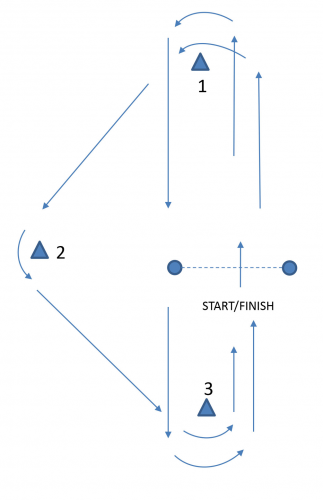
This course, Course “E,” is a typical triangle-windward-leeward course –
S – 1 – 2 – 3 – 1 – 3 – F
Assume a significant windshift to the left makes it desirable to change the position of Mark 1 on the second windward leg.
The race committee will signal the change at mark 3 (before any boat begins the leg). They will hoist Code Flag “Charlie” with repetitive sounds and a red rectangle.
NOTE: The new mark need not be in the water yet. The signal tells you that a change is being made. By the rules, the mark doesn’t need to be there until boats are there to round it. Ideally, the race committee gets it into position well before any boat is approaching, but the rules give them a lot of leeway in making the change. Remember – the purpose is to “save” the race and keep it competitive.
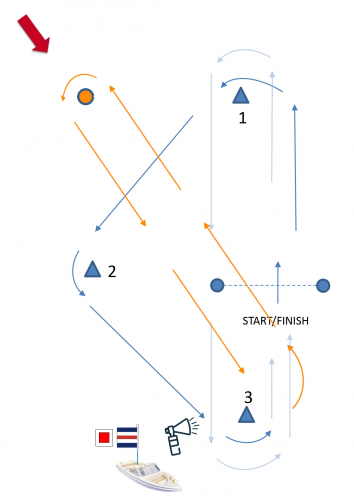
You would now sail to the “new” mark – ideally it is of a different color and/or shape (this would be described in the SIs), although that is not always the case.
Notice that, to maintain the same course angles, the race committee should also move Mark 3 and change the angle of the finish line. Sometimes with short course racing, this isn’t always practical if the fleet is spread out, but, ideally, that would be the proper thing to do.
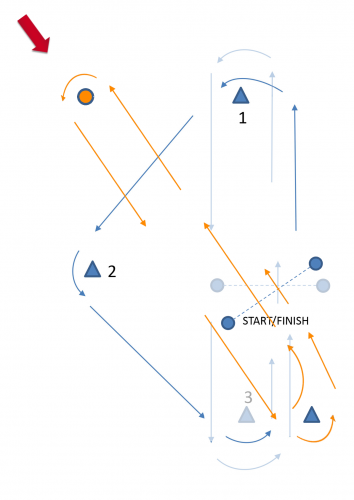
Notice, however, that this subsequent “change” is not signaled…
“…
c. Subsequent legs may be changed without further signalling to maintain the course shape.”
Once the first change is signaled, subsequent changes do not have to be signaled. In other words, you should assume that subsequent legs are likely to be changed. The race committee is free to do so without tying up valuable resources signaling at each mark.
If a separate “change mark” is being used for the primary change, it is entirely possible that subsequent “changes” will not utilize these change marks. More than likely, the existing marks will be relocated to their adjusted positions if possible. “Change Marks” are not addressed specifically in the rules and there is not one standard practice used in this situation.
How much of a shift will initiate a change?
It depends…
Ok, not the best answer, but an accurate one. In some venues, the wind blows steady and at pretty much the same velocity and direction at the same time every day. Buckeye Lake is NOT one of those venues! In those places, particularly for “high level” events, a change of 10-15 degrees might be enough for the race committee to change the angle of the next leg. In places that are known for more shifty winds (like most of our region), that threshold is typically higher.
Knowing when to make a change is, very often, more of an art than it is a science. A good Race Officer knows the venue and has a good “feel” for local conditions (or, if visiting, has someone on board the RC boat who does.) One thing that seems to be a truism in race management is that any change will be greeted with both support and criticism. That’s the nature of things and perfectly understandable. Just as with most things rules-related though, I always remember George Fisher’s admonishment regarding the rules… “Don’t let one incident ruin your whole race.” The race committee may signal a change you think was unnecessary (maybe you were on the “lifted” side of the course and had gained an advantage.) Trust that they made the change for good reason, sail the course and keep sailing your race. Once signaled, right or wrong, that is the course you have to sail according to the rules.
Is it ever required for the race committee to change course?
Typically no…
Generall speaking, the rules of Part 3 are permissive rather than proscriptive. That is they allow the race committee options but, generally, they seldom require them to exercise those options. In the case of this rule, the decision is that of the race committee – “…may change a leg of the course…” The procedures to do so, however, are proscriptive – “… the signal shall be…”
Sometimes Sailing Instructions or Class Rules might give specific directions on changing course. Although, in my experience, I’ve found that, more often than not, they restrict the ability to change and proscribe abandonment instead. (rather than direct the RC when to make a change)
Next Week - Part 3 "Grab Bag"
... Rules 27, 31, 34, & 35
RRS – Part III; Post #7 – Rule 32 (con’t)
Often, we focus our rules discussions only on Part 2 of the rules – “When Boats Meet.” This winter, I plan to explore the rules of Part 3 – “Conduct of a Race.” They may appear to only matter to the Race Committee, but they have significant importance to the racing sailor too.
– Steve Harris, US Sailing National Race Officer
Rule 32 - Shortening or Abandoning After the Start
Last week, we discussed the “abandoning” part of this rule. This week, we’ll look at how the Race Committee can shorten the course under this rule. If you didn’t read last week’s post, you can click here to do so.
Let’s look at the text of the rule…
NOTE – Rule 32 only applies after the start. Rule 27.3 allows the race committee to abandon before the start for any reason.
32.1
“After the starting signal, the race committee may shorten the course (display flag S with two sounds) or abandon the race (display flag N, N over H, or N over A, with three sounds)
- because of foul weather,
- because of insufficient wind making it unlikely that any boat will finish within the race time limit,
- because a mark is missing or out of position, or
- for any other reason directly affecting the safety or fairness of the competition,
In addition, the race committee may shorten the course so that other scheduled races can be sailed, or abandon the race because of an error in the starting procedure. However, after one boat has started, sailed the course and finished within the race time limit, if any, the race committee shall not abandon the race without considering the consequences for all boats in the race or series.”
32.2
“If the race committee signals a shortened course (displays flag S with two sounds), the finishing line shall be,
- at a rounding mark, between the mark and a staff displaying flag S;
- a line the course requires boats to cross; or
- at a gate, between the gate marks.”
The reasons that the RC can shorten the course are, essentially the same as those for which they can abandon. There are some key differences, however. Additionally, Rule 32.2 provides specific guidance on how the course is shortened.
I won’t delve into the enumerated reasons for shortening under 32.1 as those were discussed in detail last week. However, Rule 32.1 also provides the following:
“In addition, the race committee may shorten the course so that other scheduled races can be sailed…”
The reasons for this additional directive may not seem readily apparent. But, simply put, there are often reasons to get more races in:
- Most often, becuase the SIs require a minimum number of races – greater than 1 – to count as a series.
- Sometimes, in a very competitive event, when scores are “tight,” it may be advisable to have more races rather than less, to give all competitors the greatest chance of finishing well over all. (i.e., keep the competition on the water, not in the hands of the race or protest committees)
- Generally, its felt that “saving the race” is a better option that abandoning. It’s no fun spending a lot of time fighting for a good finish to have the race committee “throw the race away.”
That said, race officers are advised in their training to carefully consider all factors when making the decision to shorten. Generally, course selection involves a number of good, well though out factors and changing that configuration “on the fly” by eliminating one or more legs may be counter to those reasons. But, the rule does provide race committees with that flexibility nonetheless.
What does it mean to “Shorten the Course?”
This is actually a point of confusion for many competitors and race committees alike. Intuitively, “shortening” implies keeping the course the same – same configuration, same number of legs & rounding marks, etc. – but making the distance less. That is not the case here.
Shortening the course is the elimination of legs of the course. What is described above is covered in RRS 33 – Changing the Next Leg of the Course (emphasis added).
Let’s look again at one of our “typical” courses at BLYC…
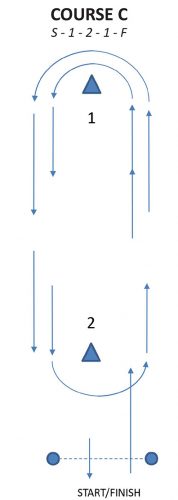
Under normal circumstances, sailing this course would entail the following (in order):
- Starting
- Rounding Mark 1
- Rounding Mark 2
- Rounding Mark 1 again
- Finishing
But… what if the wind starts dying off (and quickly) as most boats are rounding Mark 2 to start their 2nd windward leg. Looking at the reasons under which the RC is permitted to shorten…
- Is it likely that the first boat will finish within the time limit?
- If it is, is it still a fair race?
- Is this race valuable to series (i.e., “so that other scheduled races can be sailed”)
It may, very well, be desirable to try and “save” this race by shortening the course at the next mark (Mark 1, 2nd time) by eliminating that last leg to the finish.
As a side note… one thing that has become increasingly common in recent years, is race committees utilizing this rule to “finish closer to home” at the end of a race. That is, say in our Course C example above, the windward mark (Mark 1) is closer to where the boats are docked or hauled out. Eliminating the final leg finishes them closer to home than having them sail the final leg would. Certainly, it would be better if this was anticipated by the race committee and they chose a different course prior to the race instead, but that is not always feasible. In doing this, however, what part of Rule 32.1 allows this? I would contend that it could be a reason “… directly affecting the safety or fairness…” For example,
- Dying breeze – s a result of dying breeze, boats will need to be towed in. Towing a boat, even in light breeze and seas, is inherently more dangerous than the boat being sailed (or motored) in under the control of its crew
- Impending severe weather – while perhaps there is time to finish the boats by eliminating a leg, it is questionable whether or not there is time to finish and get the boats back to shore in time.
- Lateness of hour – it may be desirable to shorten the race in order to allow all boats to finish before nightfall. Depending on the boats competing, they may or may not have lights and other necessary safety equipment for night sailing.
How does the race committee shorten the course?
“… the race committee may shorten the course (display flag S with two sounds) …”

One interesting part of the rule is that there is no requirement as to when the flag and sound signal must be made. It only needs to be made in enough time that the first boat approaching the new finish mark (in our example above, the “old” Mark 1), sees and hears the signal to finish.
This is another frequent point of confusion and misunderstanding for many racing sailors. As we will see later with RRS 33 (Changing the Net Leg of the Course), those signals are made prior to boats sailing the leg. That is not the case with Rule 32 – and, in fact, it is for a very good reason.
If the shortening signal (eliminating a leg) was required to be signaled earlier, it may be too soon or not soon enough – think of the reasons to shorten… foul weather, insufficient wind, safety & fairness, etc. These are not things that can always be anticipated. Doing so might result in the signal being made unnecessarily (conditions improve) or, worse yet, leaving the race committee with only one option – abandonment – in the case of severe weather & safety.
Often, when considering shortening, the race committee will get everything ready, just in case, and the PRO will make the call at the last minute and direct the mark boat to hoist the flag with two sounds as the first boat is nearing the mark. How near? Close enough to see and hear the signals, yet not too close for it to be effective. Like many things with course management, it depends.
32.2
“If the race committee signals a shortened course (displays flag S with two sounds), the finishing line shall be,
- at a rounding mark, between the mark and a staff displaying flag S;
- a line the course requires boats to cross; or
- at a gate, between the gate marks.”
Rule 32.2 gives us the guidance on how, specifically this it to be executed. Let’s look at these one by one…
“1. at a rounding mark, between the mark and a staff displaying flag S;
This would be what we described in our Course C example above, the mark boat (or other boat signaling and taking the finishes) would set up such that competitors would finish between Flag S on their boat and the nearby mark.
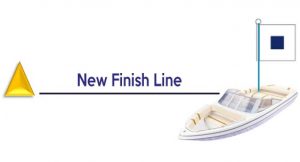
- perpendicular to the course direction from the last mark
- anchored in position
- such that a boat rounding the mark as it “normally” would, it necessarily crosses the finish line without any need to sail the course differently than planned or intended
- As this mark was to originally be left to port, they would still be leaving it to port while finishing properly
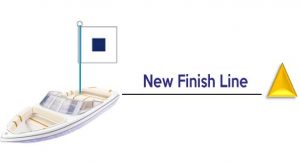
In the above situation, how would I finish properly?
You would finish according to Rule 32.2(1) – “…between the mark and a staff displaying flag S”
While, originally, you would have left Mark 1 to port – it is no longer Mark 1. It is now a finish mark.
Recall the definition of Finish…
“A boat finishes when, after starting, any part of her hull crosses the finishing line from the course side.”
It may be tempting, or even seem necessary, to leave the mark to port (as you originally would have) and round it in order to cross the new finish line. Doing so, however, would be improper. You would be scored as DNF as you didn’t cross the line from the course side.
Before we look at 32.2(2), lets look ahead at what would happen at a gate…
“3. at a gate, between the gate marks.”
Although for our typical Sunday races we seldom use gates, most of us are familiar with them. Most commonly used for downwind marks, a gate (instead of being a single mark) is composed o two marks, which you pass between, rounding either one.
In the race committee signals a shortened course at the gate, rule 32.2 is easy to comply with – sail betwen them as you normally would.

As shown above, this would be the ideal way the mark boat would set up the new line. It would be…
- perpendicular to the course direction from the last mark
- anchored in position such that they can see both marks in order to judge the line properly
- close enough to one of the marks that there is no confusion as to how to cross (i.e. there is no temptation to cross between the boat and the mark nearest to it)
Again, however, there is no requirement in the rule to meet the above conditions.
2. “a line the course requires the boats to cross”
Although the set-up and execution of 32.2(2) is easy enough to understand (it is, essentially, identical to 32.2(3)), this is often a very confusing part of the rule.
Why would there be a line that boats are required to cross that isn’t already a gate? In most sailboat racing, such a thing simply doesn’t exist.
I’m not sure that the situation I’m about to describe is what the writers were thinking when this was added, but we have a situation here at BLYC where we have taken advantage of this part of the rule – our Holiday Long Distance Races.
As you area aware our start/finish line for these races is usually in front of the race committee shack on the island and is comprised of two marks (rather than a mark and a flag on a boat). In recent years, we’ve written the SIs for these races such that boats are required to pass through this line on all legs of the course. Many think that this is so we can make the racing more interesting for the holiday spectators at the Club. While that is an advantage for sure, it actually isn’t the primary reason that we did it. Statistically speaking it doesn’t seem possible, but we almost always have light winds for the Holiday races. By making boats cross the start/finish line on every leg, the race committee has the option to shorten the course at that line. While those races are intended to be distance races. That said, there comes a point that sailing for seemingly hours on end in light air is simply neither fun nor practical.
There’s a lot that we’ve unpacked from Rule 32 these past two weeks, but hopefully it’s a little more clear now as to how it works and some of its unique nuances.
Next Week - Rule 33; Changing the Next Leg of the Course
Join Us at the 2022 I-LYA Sail Regatta
 Loading...
Loading...
Click on the ![]() icon above to expand the file
icon above to expand the file


